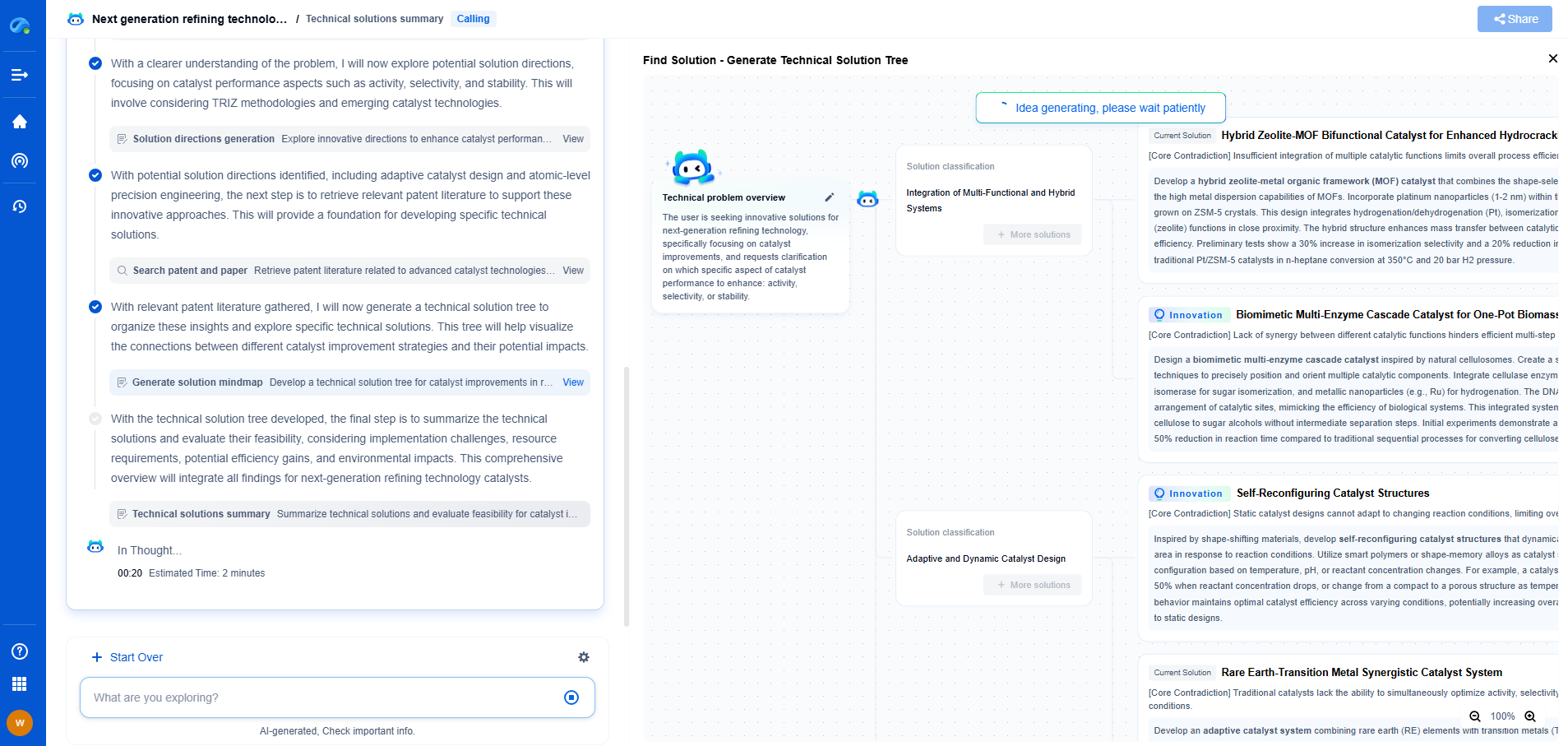HDPE vs. Carbon Steel Pipes: When to Use Each in Pipeline Projects
JUN 20, 2025 |
When it comes to pipeline projects, selecting the right material is crucial for ensuring the efficiency, safety, and longevity of the system. Two commonly used materials are High-Density Polyethylene (HDPE) and Carbon Steel. Each of these materials has its unique properties, advantages, and limitations that make them suitable for different applications. In this article, we'll explore the characteristics of HDPE and Carbon Steel pipes, and discuss when it is most appropriate to use each type in pipeline projects.
Properties and Advantages of HDPE Pipes
HDPE, or High-Density Polyethylene, is a type of plastic known for its high strength-to-density ratio. This material is increasingly popular in pipeline projects due to several key advantages:
1. Corrosion Resistance: One of the most significant benefits of HDPE pipes is their resistance to corrosion. Unlike metal pipes, HDPE does not rust or corrode when exposed to moisture, chemicals, or soil. This makes HDPE an ideal choice for applications where the pipeline is likely to encounter corrosive substances.
2. Flexibility and Durability: HDPE pipes are highly flexible, allowing them to withstand ground movements and vibrations without cracking or breaking. This flexibility also makes HDPE pipes easier to install, particularly in areas with challenging terrain.
3. Lightweight: HDPE pipes are much lighter than their metal counterparts, making them easier to transport and handle. This can lead to lower installation costs and faster project completion times.
4. Longevity: HDPE pipes have a long service life, often exceeding 50 years, which makes them cost-effective over the long term.
5. Environmental Friendliness: HDPE is a recyclable material, contributing to sustainability efforts and reducing environmental impact.
Despite these advantages, HDPE pipes may not be suitable for all applications. Their lower heat resistance compared to metal pipes can be a limiting factor in high-temperature environments.
Characteristics and Benefits of Carbon Steel Pipes
Carbon Steel pipes have long been a staple in the pipeline industry, known for their strength and reliability. Some of the key characteristics and benefits of Carbon Steel pipes include:
1. High Strength: Carbon Steel pipes are incredibly strong and can withstand high pressures and temperatures, making them suitable for transporting petroleum, natural gas, and other high-pressure fluids.
2. Temperature Resistance: These pipes can endure high temperatures, which makes them ideal for industrial applications where heat is a concern.
3. Versatility: Carbon Steel is available in various grades and forms, allowing for customization according to project specifications. This versatility makes it applicable in diverse industries, from oil and gas to construction and manufacturing.
4. Durability: With proper maintenance, Carbon Steel pipes can last for decades, providing a reliable option for long-term projects.
While Carbon Steel pipes offer significant strength and durability, they are susceptible to corrosion, especially when used in environments with high moisture or aggressive chemicals. Regular maintenance and protective coatings are often required to mitigate this issue.
Comparative Analysis: When to Use HDPE vs. Carbon Steel
The decision between HDPE and Carbon Steel pipes depends on several factors related to the specific needs of the pipeline project. Here are some considerations:
1. Corrosion Concerns: If the pipeline is expected to encounter corrosive substances or be installed in a wet or marine environment, HDPE might be the better choice due to its natural resistance to corrosion.
2. Temperature and Pressure Requirements: For projects involving high temperatures and pressures, Carbon Steel is generally more suitable due to its ability to withstand these conditions without degrading.
3. Terrain and Installation Challenges: In projects where the pipeline needs to navigate difficult terrain or requires flexibility, HDPE's lightweight and flexible nature can be advantageous.
4. Budget Constraints: While HDPE can be cheaper in terms of installation costs due to its lightweight nature, Carbon Steel might provide better long-term value in certain high-stress applications due to its strength and durability.
5. Environmental Impact: If sustainability is a key concern, HDPE's recyclability and lower environmental footprint could be a deciding factor.
Conclusion
Both HDPE and Carbon Steel pipes have their place in the pipeline industry, each offering distinct benefits that make them suitable for specific applications. Understanding the properties and advantages of each material can guide project planners in making informed decisions that align with their operational, environmental, and budgetary goals. By carefully considering the factors outlined above, engineers and project managers can ensure the optimal selection of pipeline materials for their specific needs.
Transform the Way You Innovate in Pipeline Technology—with AI-Powered Intelligence
From corrosion-resistant materials to smart monitoring systems and advanced flow control mechanisms, the pipeline industry is undergoing rapid technological transformation. Yet keeping up with evolving engineering solutions, regulatory landscapes, and competitive patents can be a major bottleneck for R&D and IP teams.
Patsnap Eureka is your AI-powered research companion—built specifically for professionals in high-tech and infrastructure domains like pipeline technology. Whether you're designing high-pressure transport systems, assessing trenchless installation innovations, or safeguarding proprietary flow assurance solutions, Eureka provides real-time insights into global patent trends, emerging technologies, and R&D intelligence—all in one intuitive interface.
Empower your team to innovate faster, reduce technical blind spots, and stay ahead of industry shifts. Discover Patsnap Eureka today and bring clarity and confidence to your pipeline technology decisions.
- R&D
- Intellectual Property
- Life Sciences
- Materials
- Tech Scout
- Unparalleled Data Quality
- Higher Quality Content
- 60% Fewer Hallucinations
Browse by: Latest US Patents, China's latest patents, Technical Efficacy Thesaurus, Application Domain, Technology Topic, Popular Technical Reports.
© 2025 PatSnap. All rights reserved.Legal|Privacy policy|Modern Slavery Act Transparency Statement|Sitemap|About US| Contact US: help@patsnap.com

